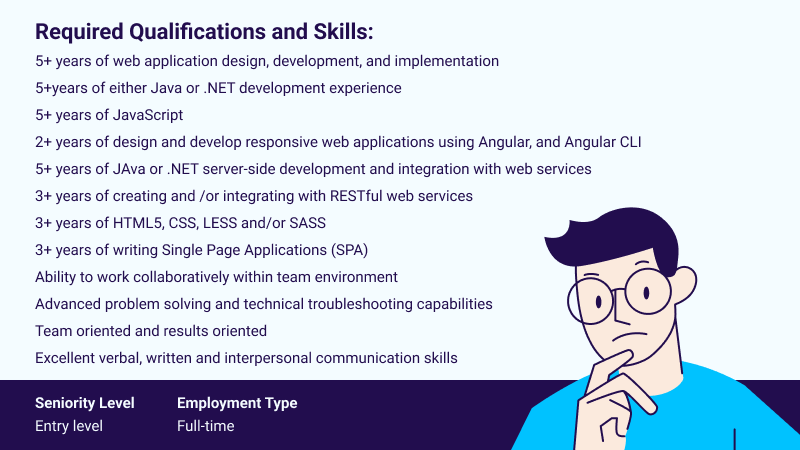
How to attract talent to fuel a mobile-first enterprise

Most elite professional athletes agree on one thing: eventually, a younger and faster competitor will try to break their records and take their titles. And large enterprises — especially those that are adapting to a mobile-first world — have the same worry about up-and-coming startups stealing their talent pool.
Hiring qualified personnel is one of the toughest challenges for a company becoming mobile-first, according to our recent in-house report. That’s because much of tech’s top talent is attracted to younger startups that are more exciting, edgy, and flexible than their larger competitors.
Big organizations are seeking the kind of specialized tech talent that will drive innovation, but first, they have to woo job seekers away from startups.
If this struggle sounds familiar, read on for five tips on how to attract the world’s top technical talent. But before we dive into that, we need to be clear on what pulls candidates toward startups in the first place.
Why large mobile-first companies struggle to hire top talent
Enterprise executives are often baffled as to why they have a hard time recruiting top talent. After all, established companies can offer bigger paychecks, more stability, and a comprehensive path to professional growth.
Often, these execs assume that developers chose startups for the ping-pong tables and free kombucha.
But in reality, tech talent gravitates to the startup world for more profound reasons:
- Equity in the business: Many startups offer equity to new employees, which can pay dividends as the business scales.
- More opportunity for growth: Working at a startup usually requires taking on many varied roles. This is appealing to workers who enjoy taking on new challenges, and fear the monotony of daily tasks at larger organizations.
- Flexibility: Most modern startups offer remote working conditions with generous vacation packages that traditional businesses simply aren’t set up for.
This set of offerings is not something enterprises can compete against since they can’t afford to change their business model, but they can’t afford NOT to hire mobile developers either.
One of our survey respondents, for example, said “It’s harder to hire people because everyone wants remote roles that we never thought would be. They really want to be drawing a California salary sitting in Texas. It has an impact on everything.”
To help you compete with younger startups, here are five actionable tips on how to attract top talent to fuel a mobile-first enterprise.
1. Set competitive salaries
Salaries alone aren’t enough to guarantee you’ll recruit top talent, but they’re the best place to start. Accepting this can be a challenge for organizations, especially when the spike in payroll is going toward a new, untested technology.
And it’s true that developers – particularly those with a specialized skill set – command high salaries that many non-technical employees tend to balk at.
But the investment in a team that can realize a mobile-first strategy is worth it. The consumer shift to mobile is accelerating rapidly, and “on average, 40% or more of existing sales are now being conducted through mobile.” Our research shows that mobile is replacing a lot of business functionality, and “for nearly a quarter of respondents, the goal is for it to replicate 100%.”
This places higher expectations on the functionality and design of your organization’s mobile experience. In order to thrive in this kind of competitive market, you’ll want to set aggressive salaries as you seek the world’s best mobile-first developers.
Fortunately, this gives you a huge advantage over smaller startups with less capital to attract experienced developers.
2. Find the best platform to recruit for your target position
While everyone knows about the big job hunting sites like Monster.com or Indeed.com, you should broaden your candidate research across a variety of platforms and look for ones that draw in top developer talent.
Consider posting on the job boards on Stack Overflow, Uncubed, and Dice. The mere fact that you’re tech-savvy enough to put job listings on these niche platforms sends an immediate message to candidates that your company isn’t stuck in the past.
One social media platform that’s always an asset when searching for new candidates is LinkedIn. But the exact steps for recruiting top talent on that platform can vary depending on your niche.
To be able to pinpoint the right professional to help you run a mobile-first business, we recommend checking out LinkedIn’s guide to hiring a software engineer.
3. Punch up your job descriptions
The same principles you use to attract new leads apply when looking for a job candidate.
You need your job posting to tell a compelling story about your company and convince job seekers that you understand their needs. And when it comes to writing great job listings, larger organizations tend to be at a disadvantage compared to startups.
That’s because enterprises usually have someone in a non-technical department, like human resources, draft their job description.
This can lead to generic and often jargony job postings that were written by someone who doesn’t speak the language. What’s more, these job descriptions tend to be loaded with vague descriptions, like “Generate ideas on how to optimize workflow and collaboration” or make the actual responsibilities read like a list of dreary chores (“You will be manipulating images and maintaining content, while ensuring that approvals and postings are correct and completed within deadlines.”).
Startups, however, usually have smaller, specialized teams that can better define exactly what’s needed for each role. This allows them to write more personalized and more engaging job descriptions. If you work at a larger organization, be sure to sit down with the hiring manager and write detailed and personal job descriptions that would be enticing to your ideal candidate.
Either way, make sure that you and your team take the time to identify specific tasks that need to be addressed, and the type of candidate profile you’re looking for – and that they use engaging and relatable language that brings these responsibilities to life.
4. Give reasonable standards for experience required
We’ve all seen examples of job postings that read like this: “Entry-level position, Bachelor’s degree required, must provide 3 references, 5+ years of experience. Starting salary: $30,000.”
Or in other words: “Hiring for a manager position with entry-level pay.”
This leads to a lot of young talent struggling to fill entry-level jobs. According to the BBC, “More than 60% of listings for entry-level software and IT Services jobs… required three or more years of experience.”

While you need someone with adequate experience, you also need to be realistic about the type of talent you want to attract for the position level you have open.
This will change depending on the exact position you’re trying to fill, but an easy way to see what’s “reasonable” for your job posting is to do a bit of research.
Look at similar positions at other companies through the eyes of a job seeker – to get an idea of what “entry,” “intermediate,” and “expert” experience means for a developer in your field. Better yet, get feedback from other developers at your company.
5. Make the hiring process clear from the start
When you have a stack of 30 qualified applicants to sift through, it can be easy to get comfortable and take your time. In fact, the entire process from the initial interview to the final hire takes, on average, 24 business days.
And if applicants don’t know when they’ll hear back from you, they might take another offer while their resume is still working its way through HR.
This is another area where enterprises are at a disadvantage. Their hiring processes tend to be more complex, while startups can usually give a job offer on the spot. In order to compete, it’s crucial to respect your candidates’ time and be upfront with them about how your hiring process works.
If you have multiple rounds of interviews, for example, mention it in the job description. And after each interview, make sure to give the candidate a rough idea of when they can expect to hear from you next.
Remember, people applying for your job opening are likely applying to many others. If you find a great developer but don’t make an official offer for several weeks, a more agile startup can swoop in and steal them from under your nose.
Key takeaways
Transitioning or establishing your company toward mobile-first brings about exciting opportunities for the future of your organization. This is particularly true given the pandemic, which has been the biggest force of change to impact the mobile transformation process in recent years.
But to find the world’s top tech talent who can bring your organization to new heights, you’ll want to follow our five actionable tips:
- Set competitive salaries
- Find the best platform to recruit for your target position
- Punch up your job descriptions
- Give reasonable standards for experience required
- Make the hiring process clear from the start
For more information about how and why enterprise businesses are going mobile-first, be sure to check out our recent in-depth report: How corporations are being transformed by mobile devices.




